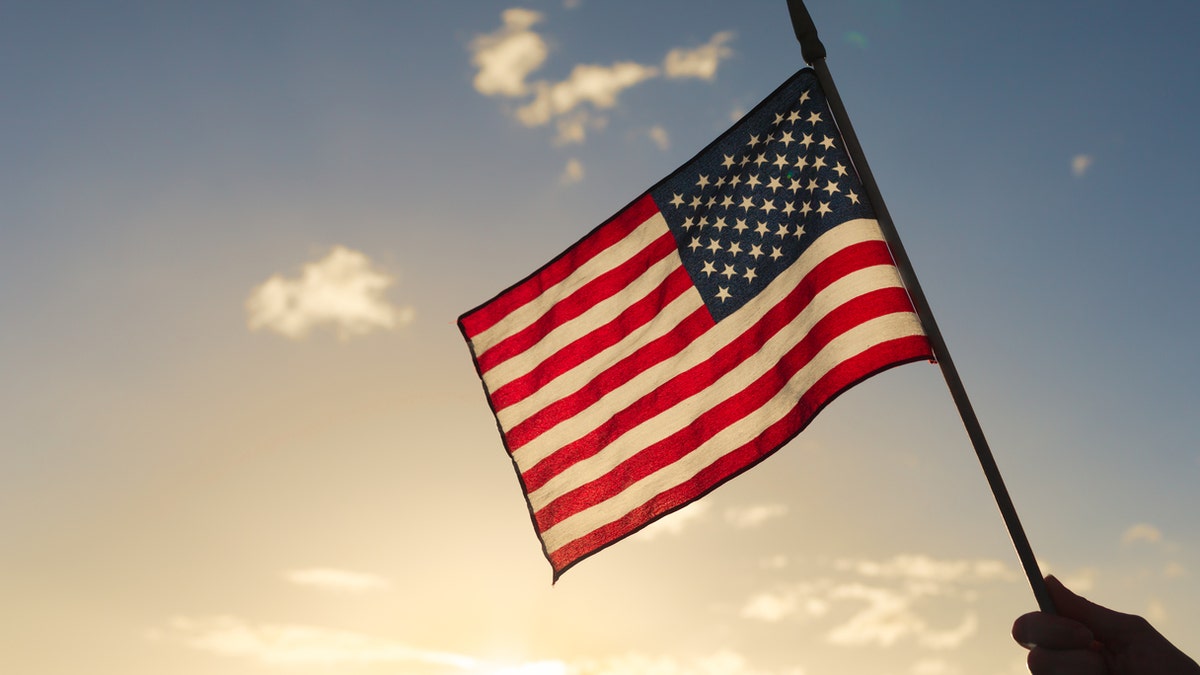
Person holding american flag. (iStock)
On May 6, 1942, in the early months of World War II, the American flag was hauled down on the island of Corregidor in the Philippines. The surrender marked the end to five months of bitter fighting during which invading Japanese forces trapped American and Filipino troops on Bataan. The horrors of the Bataan Death March still resonate three-quarters of a century later, but literally hours after Corregidor’s surrender, Americans fought another battle that gave hope that the war could be won.
America’s military presence in the Philippines was always controversial. Having acquired the islands during the Spanish-American War, the United States haltingly steered the country toward independence during the 1930s even as it considered its military bases around Manila essential to blunting Japanese expansionism in Southeast Asia. General Douglas MacArthur, commander of American forces in the Far East, formed a Filipino volunteer army to defend the entire archipelago and counted on B-17 bombers to form the backbone of his offshore defenses.
Things began to go awry early on the morning of December 8—Manila time—when MacArthur awoke to news of the Japanese attack on Pearl Harbor. A cascading chain of events resulted in half of MacArthur’s air force being destroyed on the ground. Multiple Japanese landings throughout the islands subsequently overwhelmed Filipino defense forces.
As the Japanese tightened their grip on Bataan, President Franklin Roosevelt ordered MacArthur to leave Corregidor and proceed to Australia, ostensibly to take command of a relief expedition. His return to the Philippines would take years, but MacArthur’s dramatic escape by PT-boat propelled him into legend as the hero the American public desperately needed during the uncertain early months of the war.
Back in the Philippines, there was no hero worship. Faced with starvation, forces on Bataan surrendered early in April. Corregidor hung on until May 6. Where did this disastrous defeat leave America and its allies? As MacArthur hunkered down in Australia and mourned the fall of Corregidor, two aircraft carriers of the US Navy sailed into the Coral Sea to counter an invasion aimed at Port Moresby on New Guinea that threatened Australia itself.
Confusion reined on both sides. Japanese aircraft mistook an oiler and accompanying destroyer for a carrier and a cruiser and pummeled them. American pilots searching for Japanese carriers stumbled onto the invasion force instead. The opposing carriers finally engaged each other directly with their aircraft—the first major battle fought without surface ships seeing one another.
When the smoke cleared from the Coral Sea, the American carrier Lexington was on the bottom, but naval aviators had sunk one Japanese carrier and damaged another in return. The Americans and their Australian allies sustained heavier losses, but strategically dealt the first setback to Japan’s advances and blunted its drive to cut Australia’s lifeline to the West Coast.
At the time it was premature to characterize the results of the Battle of the Coral Sea as a victory. Little appeared in the headlines to counter the negative news of Corregidor. But the Battle of the Coral Sea, coming within forty-eight hours of the fall of Corregidor, in retrospect demonstrated that while the war was far from won, it could be won. The battle marked a turning point in the Pacific war.
Seventy-five years later, no one should ever count America out. Fortunes can change in an instant. The margin of victory was slight, but against the tragedies of Bataan and Corregidor, the resolve shown at Coral Sea is proof that America’s will to win is a powerful thing.
